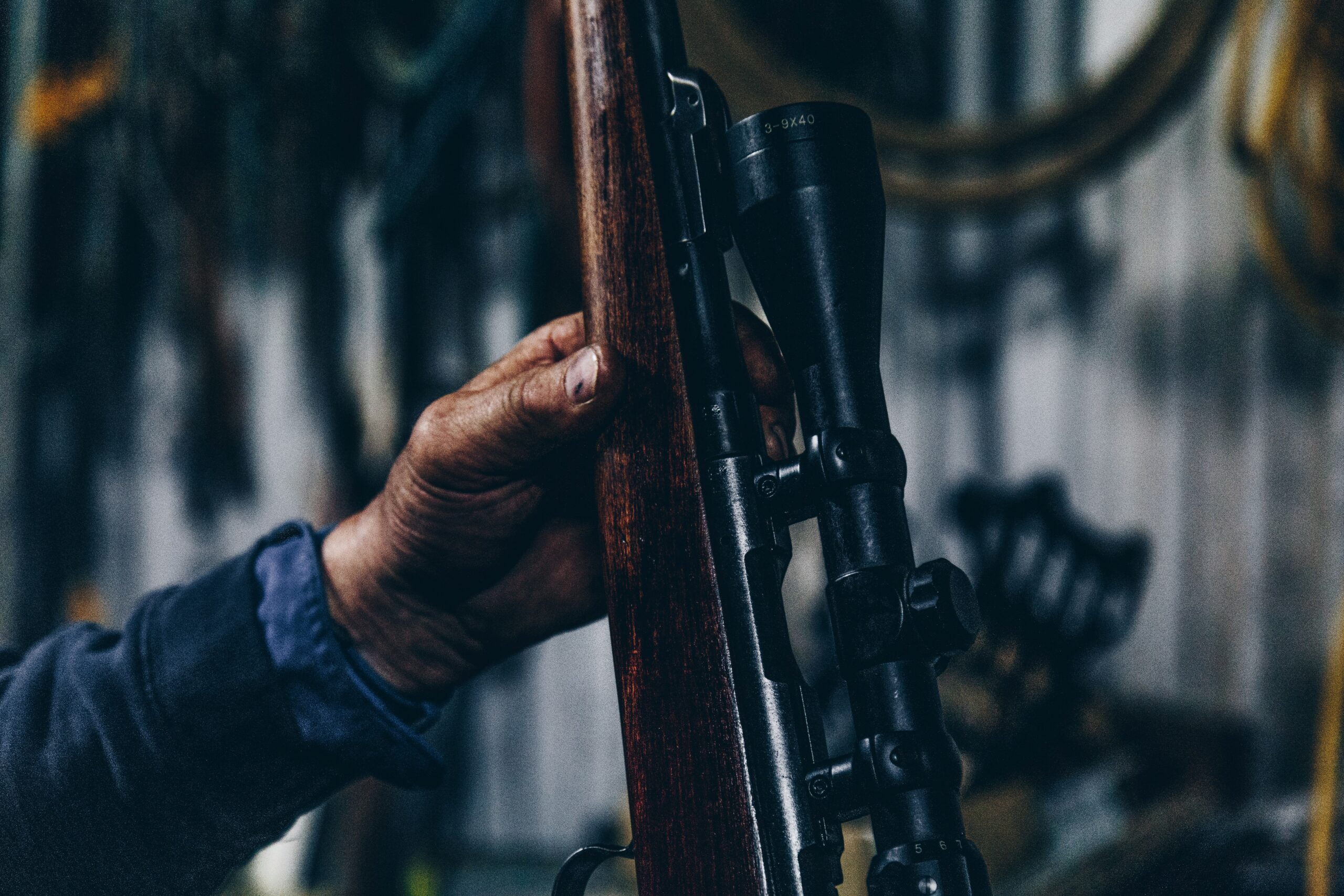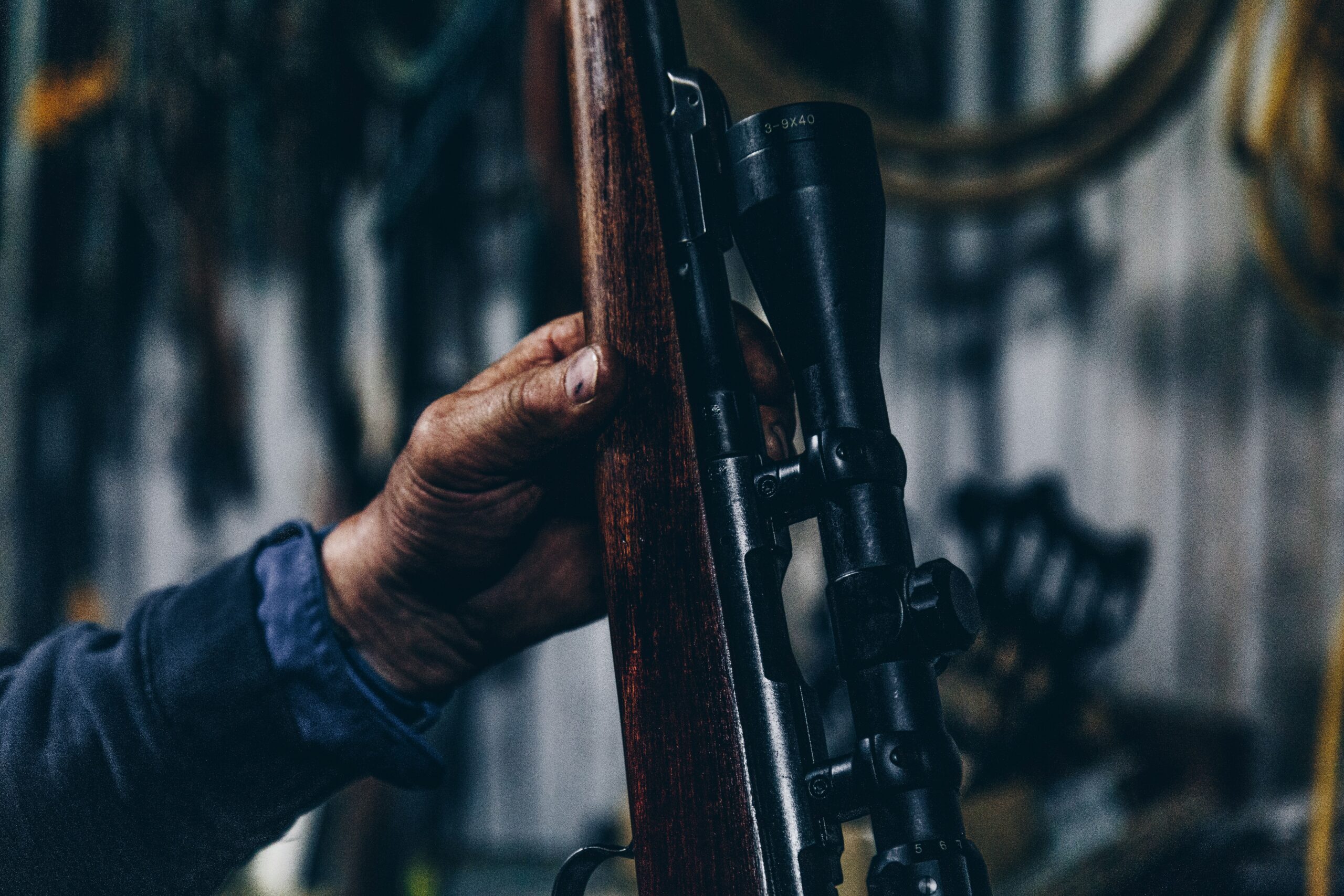If you’re an avid hunter or a passionate marksman, you know the importance of precision when it comes to your scope. But have you ever wondered what exactly the MOA adjustment per click on a scope entails? Well, let’s break it down for you. The MOA adjustment per click refers to the minute of angle measurement system used in scopes to finely adjust your aim. It determines how much your point of impact will move each time you make an adjustment on your scope’s turret. So, whether you’re adjusting for windage or elevation, understanding the MOA adjustment per click is key in ensuring that your shots hit the mark every single time.
Understanding the Basics of MOA
Definition of MOA
MOA stands for Minute of Angle, which is a unit of measurement commonly used in shooting and ballistics. It refers to the angular measurement equal to 1/60th of a degree. In practical terms, 1 MOA roughly translates to 1.047 inches at 100 yards, or approximately 0.29 inches at 25 yards. MOA is used to measure the accuracy and adjustability of firearms, especially when it comes to rifle scopes.
Importance of MOA in Shooting
Understanding MOA is crucial for achieving accuracy in shooting. It allows shooters to make precise adjustments to their aim, compensating for factors such as bullet drop, windage, and elevation. By utilizing MOA, shooters can fine-tune their rifles and optics to consistently hit their targets at various distances. Whether you are a beginner or an experienced marksman, having a good grasp of MOA is essential for consistently improving your shooting skills.
How MOA is used in Rifle Scopes
Rifle scopes are equipped with turrets or knobs that allow shooters to make adjustments in MOA. These adjustments control the position of the reticle in relation to the bullet’s impact point. By turning the elevation and windage turrets, shooters can move the crosshairs horizontally (windage) or vertically (elevation) to compensate for environmental factors, bullet trajectory, and target distance. Understanding how to use these adjustments effectively can significantly enhance shooting accuracy.
Understanding Scope Adjustments
Understanding Windage and Elevation Adjustments
When it comes to scope adjustments, there are two primary categories: windage and elevation. Windage adjustments control the horizontal movement of the reticle, allowing shooters to compensate for the wind’s effect on the bullet’s trajectory. Elevation adjustments, on the other hand, control the vertical movement of the reticle and are used to compensate for bullet drop over various distances. By understanding how windage and elevation adjustments work, shooters can make precise corrections and consistently hit their targets.
How these Adjustments Impact your Shooting
Properly utilizing windage and elevation adjustments in your scope can have a significant impact on your shooting accuracy. Without making the necessary adjustments, factors such as wind drift and bullet drop can cause your shots to miss the target. By taking into account these variables and making the appropriate adjustments, you can ensure that your aim is accurately aligned with the target, even under adverse conditions. Being able to adapt and compensate for these factors is fundamental to achieving consistent accuracy.
Understanding the Reticle and Crosshairs
The reticle and crosshairs in a rifle scope play a critical role in aiming and precision shooting. The reticle, also known as the “crosshair pattern,” is the pattern of lines and shapes that intersect in the center of the scope’s field of view. It helps shooters align their aim with the target. The crosshairs, on the other hand, refer to the thin lines or threads that intersect at the center of the reticle, forming a precise aim point. By understanding the layout and functionality of the reticle and crosshairs, shooters can make more precise and consistent shots.

MOA Adjustment per Click – What Does it Mean?
Definition and Explanation of MOA Adjustment per Click
The MOA adjustment per click refers to the amount of adjustment the scope’s turrets or knobs make with each click. A standard rifle scope usually has turrets that allow adjustments in either ¼ MOA or ½ MOA per click. This means that each click will move the point of impact either ¼ inch or ½ inch at 100 yards. Understanding the MOA adjustment per click is essential for making precise adjustments and compensating for various shooting conditions.
Why it is Essential for Achieving Accurate Shots
The MOA adjustment per click is crucial for achieving accurate shots because it allows shooters to make precise and incremental adjustments to their aim. When dealing with long-range shooting and fine-tuning the point of impact, even the smallest errors can lead to a significant miss. By having a scope with a consistent and reliable MOA adjustment per click, shooters can fine-tune their aim with confidence, ensuring that each adjustment brings them closer to their desired point of impact.
How Different Scopes May Have Different MOA Adjustments Per Click
It’s essential to note that not all scopes have the same MOA adjustment per click. While the standard is ¼ MOA or ½ MOA per click, some scopes may have variations. For example, long-range scopes designed for precision shooting may have finer adjustments, such as ⅛ MOA per click, allowing for even more precise adjustments. On the other hand, scopes designed for close-range shooting may have coarser adjustments, such as 1 MOA per click, which is suitable for quick target acquisition. Understanding the specific MOA adjustment per click of your scope is essential for making accurate adjustments.
Calculating MOA Adjustment
The Basic Formula for Calculating MOA
Calculating the MOA adjustment involves a simple formula: Distance (in inches) / Distance (in yards) x MOA value = MOA adjustment. For example, if you want to calculate the MOA adjustment at 500 yards with a scope that has ¼ MOA per click, you would use the formula: 500 / 100 x 0.25 = 1.25 MOA adjustment. Understanding and using this formula allows shooters to accurately calculate the necessary MOA adjustment for any given distance.
Factors Influencing the MOA Calculation
While the basic formula for calculating MOA adjustment is straightforward, there are additional factors that can influence the adjustment needed. Factors such as bullet type, bullet weight, muzzle velocity, atmospheric conditions, and shooter error can affect the bullet’s trajectory and, subsequently, the necessary MOA adjustment. Additionally, environmental factors such as wind speed and direction can also impact the required MOA adjustment. Taking these factors into account when calculating MOA can help shooters make more precise adjustments.
Practical Examples of Calculating MOA
To better understand the practical application of MOA calculation, let’s consider a couple of examples: Example 1: Suppose you are shooting at a target 200 yards away and your scope has ½ MOA per click. Using the formula: 200 / 100 x 0.5 = 1 MOA adjustment. This means that each click on your scope will adjust the point of impact by 1 MOA at 200 yards. Example 2: If you are shooting at a target 800 yards away with a scope that has ⅛ MOA per click, the calculation would be as follows: 800 / 100 x 0.125 = 1 MOA adjustment. In this example, each click will adjust the point of impact by 1 MOA at 800 yards. By practicing these calculations and understanding the impact of various factors, shooters can become proficient in making accurate MOA adjustments.

Types of Scopes Based on MOA Adjustment
Scopes with ¼ MOA per Click
Scopes with ¼ MOA per click adjustments are commonly found in a variety of riflescopes. They offer a good balance between precision and ease of adjustment. Each click on these scopes will adjust the point of impact by ¼ inch at 100 yards. This level of adjustability makes them suitable for most shooting applications, from hunting to target shooting.
Scopes with ½ MOA per Click
Scopes with ½ MOA per click adjustments are another popular option for shooters. These scopes provide slightly larger adjustments per click compared to scopes with ¼ MOA per click. Each click on these scopes will adjust the point of impact by ½ inch at 100 yards. They are favored by shooters who prefer a more pronounced adjustment or those who primarily engage in shooting at shorter distances.
High-Adjustment Scopes
High-adjustment scopes, also known as precision scopes, are designed for long-range shooting and demanding applications. These scopes often come with finer adjustments, such as ⅛ MOA or even 0.1 MIL per click. The increased level of adjustability allows for highly precise adjustments that are essential when engaging targets at extreme distances. These scopes are favored by precision shooters, competitive shooters, and long-range enthusiasts.
Effect of Distance on MOA Adjustment
How Distance Influences MOA Adjustments
The distance between the shooter and the target has a significant impact on the MOA adjustments required. As the target gets closer or farther away, the bullet’s trajectory changes, requiring adjustments to compensate for bullet drop and wind drift. Generally, the MOA adjustment needed increases as the distance to the target increases. Understanding this relationship between distance and MOA adjustments is fundamental to accurate long-range shooting.
Calculating MOA Adjustments for Different Distances
To calculate the MOA adjustment needed for different distances, you can use the formula mentioned earlier: Distance (in inches) / Distance (in yards) x MOA value = MOA adjustment. By plugging in the appropriate values for the distance and MOA per click, you can determine the accurate MOA adjustment required for any given distance. Remember to consider specific factors such as bullet type, environmental conditions, and shooter proficiency for more precise calculations.
Tips for Improving Long-Distance Shooting
Improving long-distance shooting requires a combination of skill, knowledge, and equipment. Here are a few tips to enhance your performance:
- Master your rifle: Become intimately familiar with your rifle’s capabilities, including its accuracy, ballistics, and limitations.
- Practice proper technique: Develop a consistent shooting technique, including your stance, grip, and trigger control. Small adjustments to your shooting mechanics can have a significant impact on long-range accuracy.
- Understand environmental factors: Wind speed and direction, humidity, and temperature all influence bullet trajectory. Developing an understanding of these factors and learning to read the environment will help you make more accurate MOA adjustments.
- Invest in quality optics: A high-quality scope with precise MOA adjustments can significantly enhance your long-distance shooting. Choose a scope suited for the distances you plan to shoot at.
- Regularly practice and train: Consistent practice is key to improving accuracy at long distances. Set up challenging targets at various ranges and practice making MOA adjustments based on the specific conditions you encounter.

Practical Application of MOA Adjustment
Sighting-In a Rifle using MOA
Sighting-in a rifle involves aligning the point of impact with the shooter’s desired aim at a specific distance. To sight in a rifle properly using MOA, follow these steps:
- Set up a target at the desired distance.
- Take an initial shot and measure the distance between the point of impact and the desired aim point.
- Calculate the necessary MOA adjustment using the formula mentioned earlier.
- Make the appropriate MOA adjustments to move the point of impact towards the desired aim point.
- Take additional shots and continue to make adjustments until the point of impact aligns with the desired aim point.
Properly sighting in your rifle using MOA ensures that your point of aim accurately translates to the point of impact at the desired distance.
Troubleshooting Poor Accuracy using MOA
MOA adjustments can also be used to troubleshoot poor accuracy. If you notice consistent misses or a pattern of shots deviating from the desired aim point, you can use MOA adjustments to correct the issue. By carefully analyzing the bullet impact, you can determine the necessary adjustments to bring your shots back on target. It may involve making adjustments for windage, elevation, or a combination of both. By systematically making MOA adjustments and testing your accuracy, you can diagnose and correct the underlying issues affecting your shooting performance.
Improving Shooting Skills with Proper MOA Understanding
Developing a deep understanding of MOA and how to utilize MOA adjustments can significantly improve shooting skills. By mastering MOA, shooters can fine-tune their aim, compensate for environmental factors, and consistently hit their targets with accuracy. Regular practice, combined with a thorough understanding of MOA adjustments, allows shooters to continuously improve their skills and performance.
Common Misconceptions about MOA
Misinterpreting MOA Adjustments
One common misconception about MOA adjustments is the notion of “more MOA is always better.” Some shooters mistakenly believe that larger MOA adjustments equate to better performance. In reality, the appropriate MOA adjustment depends on the specific shooting needs and distances. Larger MOA adjustments may be suitable for quick target acquisition at shorter ranges, but they may lack the precision required for long-range shooting. It is important to understand the intended purpose and limitations of your scope’s MOA adjustments.
The Misconception about 1 MOA Always Being 1 Inch at 100 Yards
Another common misconception is the belief that 1 MOA always corresponds to 1 inch at 100 yards. While 1 MOA is approximately equal to 1.047 inches at 100 yards, the actual measurement can differ depending on the specific shooting conditions, bullet trajectory, and other factors. It is crucial to understand that this approximation serves as a general guideline rather than an absolute rule. Taking into account the specific variables and using accurate calculations ensures precise MOA adjustments.
Correcting Misunderstandings of MOA
To correct misunderstandings of MOA, it is important to seek reliable sources of information and educate oneself on the principles and applications of MOA in shooting. Consult reputable firearms publications, attend shooting courses or workshops, or seek guidance from experienced shooters and instructors. By actively learning and applying accurate information, shooters can dispel misconceptions and develop a solid foundation of understanding regarding MOA.
Comparing MOA with Other Adjustments Systems
Comparison of MOA with Mills/MRAD
MOA and Mills/MRAD (milliradians) are both angular measurement systems used for sighting and adjusting firearms. While MOA uses 1/60th of a degree as the base unit, Mills/MRAD uses 1/1000th of a radian. The primary difference lies in the scale, where 1 MOA is approximately equal to 1.047 inches at 100 yards, whereas 1 MRAD is approximately equal to 3.6 inches at 100 yards. MRAD adjustments often provide finer adjustments than MOA, making them popular among precision shooters and military applications. Ultimately, the choice between MOA and MRAD depends on personal preference and the specific shooting requirements.
Pros and Cons of Different Adjustment Systems
Both MOA and MRAD have their advantages and disadvantages. MOA offers familiarity and simplicity for many shooters, as it is a commonly used system in the United States. Its ease of use and widespread availability of MOA-based scopes and reticles make it an attractive choice for shooters of all levels. On the other hand, MRAD offers more precise adjustments due to its finer scale and metric-based measurements. Additionally, MRAD allows for quick and straightforward conversions between distance, angular measurements, and metric systems. However, it may require shooters to become familiar with the metric system, which might be less common in some regions.
Which System to Use based on Specific Needs
The choice between MOA and MRAD ultimately depends on individual preferences and specific shooting needs. Shooters should consider factors such as familiarity, precision requirements, availability of compatible scopes and reticles, and any regulations or standards applicable to their shooting activities. Both systems are widely used and trusted by shooters worldwide, so selecting the system that best suits your needs will help maximize shooting accuracy and efficiency.
Conclusion: Role of Understanding MOA in Enhancing Shooting Accuracy
The Importance of Fully Understanding MOA Adjustments
Understanding MOA adjustments is crucial for shooters of all levels who strive to enhance their shooting accuracy. By mastering the principles of MOA, shooters can make precise adjustments to their aim, compensating for environmental factors, distance, and bullet trajectory. This understanding allows shooters to consistently hit their intended targets, whether it is for hunting, competitive shooting, or personal defense.
How Mastery of MOA Can Improve Shooting Skills
Mastery of MOA equips shooters with the knowledge and skills necessary to correct and adjust their aim effectively. By understanding MOA adjustment per click, calculating MOA adjustments for different distances, and using MOA to troubleshoot poor accuracy, shooters can continuously improve their shooting skills. The ability to make precise adjustments and accurately interpret the impact of various factors on bullet trajectory leads to enhanced performance and increased shooting accuracy.
Further Resources for Understanding MOA
For those interested in delving further into the world of MOA, there are numerous resources available to expand your understanding. Books, online articles, videos, and forums dedicated to shooting and ballistics provide valuable insights and guidance. Additionally, seeking professional instruction and training from experienced shooters or attending shooting courses can greatly accelerate the learning process. By actively seeking out resources and consistently practicing your skills, you can develop a comprehensive understanding of MOA and its applications in shooting.
In conclusion, understanding MOA and how it relates to scope adjustments is essential for shooters who wish to enhance their shooting accuracy. By grasping the basics of MOA, understanding scope adjustments, and developing the ability to calculate MOA adjustments, shooters can make precise and accurate shots regardless of the conditions. Mastery of MOA is an ongoing process that requires practice, knowledge, and continuous learning. With a solid foundation in MOA, shooters can confidently navigate the intricacies of shooting and elevate their skills to new levels of precision and accuracy.

